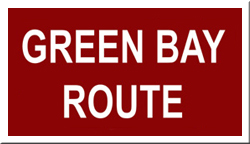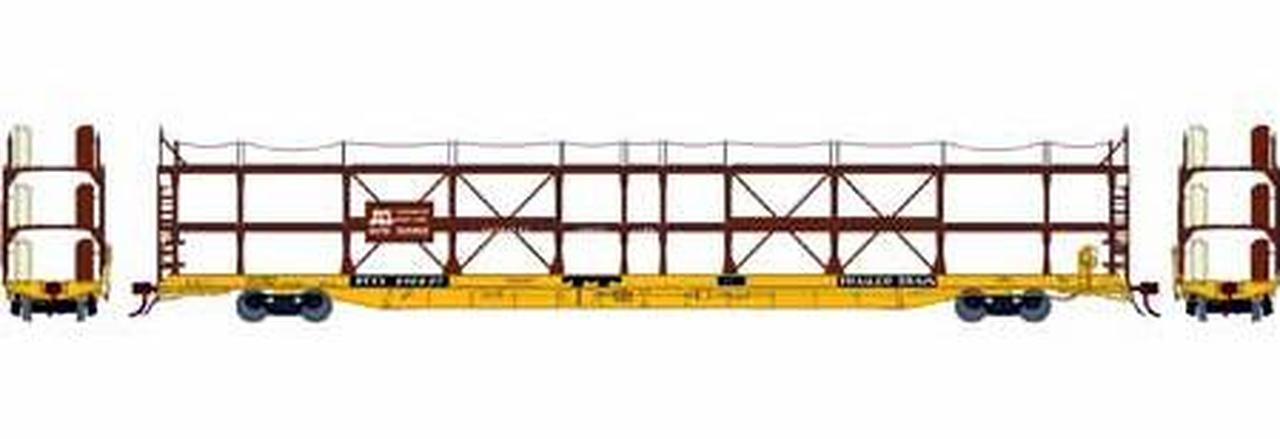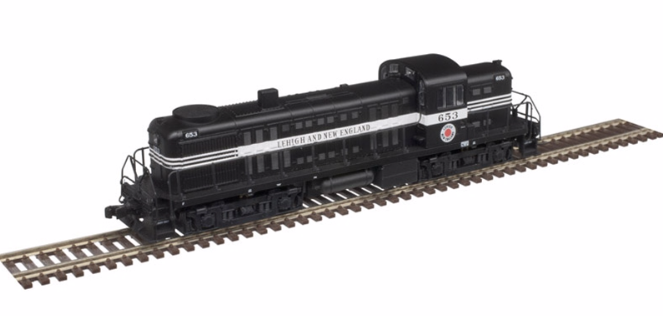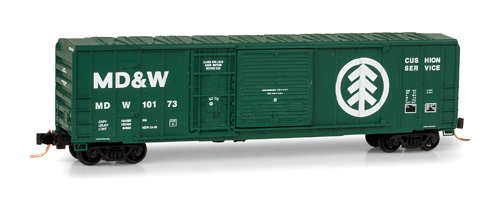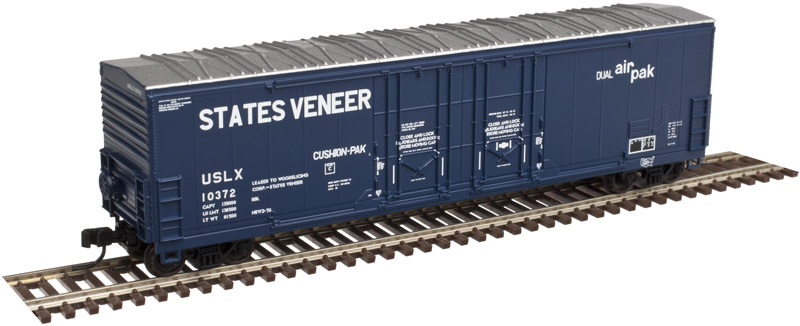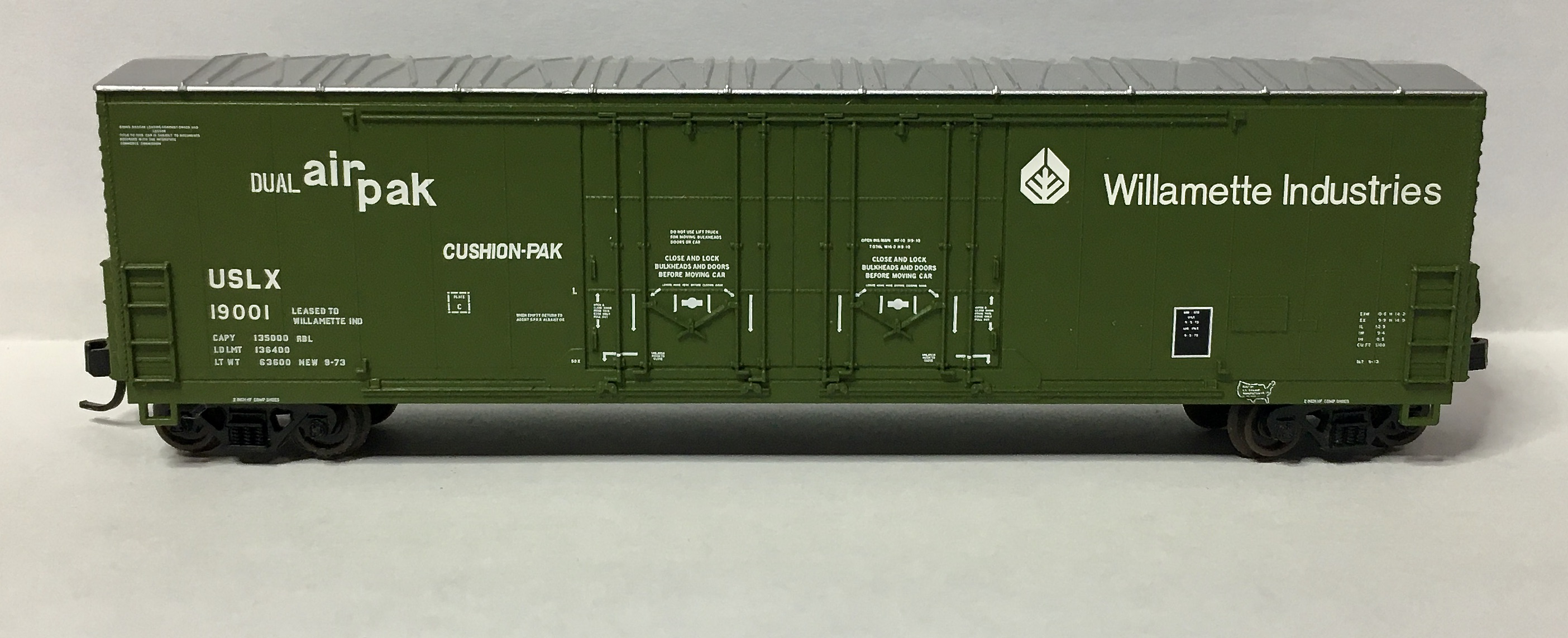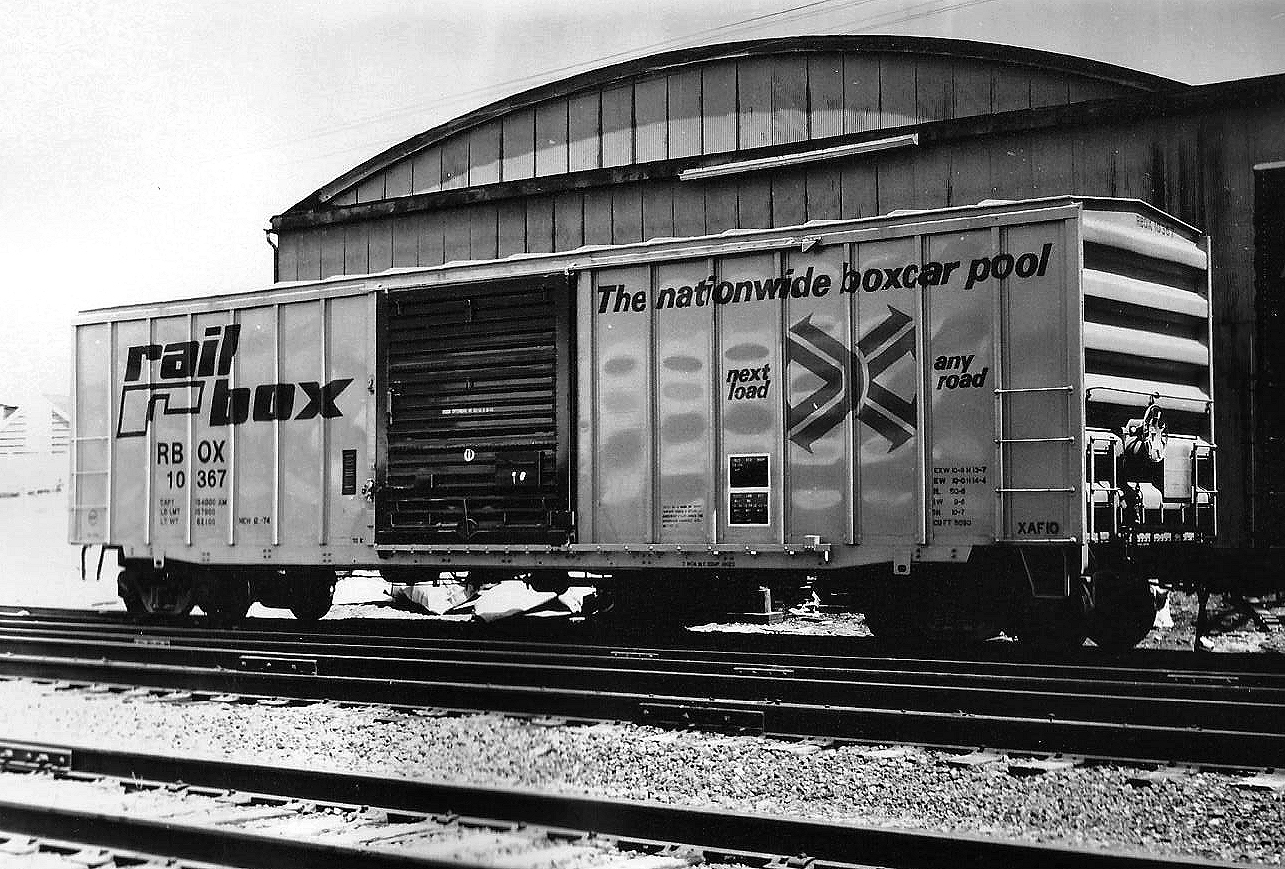Model Information: Originally designed by MDC Roundhouse. This tooling was acquired by Athearn in June of 2004 and re-released under the Athearn name.
Prototype History: In the 1970's with the growth of the Per Diem business model, FMC produced a series of 50 foot box cars in different configurations. The single-sliding-door configuration is one of the best known and used widely by many different railroads. These cars were produced using the Gunderson metal works which FMC had acquired in 1965. In late 1975, FMC began producing a 5,077-cubic-foot Plate B box car for IPD and Railbox service. FMC's 5077s have seven panels to either side of the 10-foot door, an X-panel roof, and non-terminating ends that are slightly different from those used on FMC's earlier cars. Note how the sidesill is notched all the way back to the bolsters, a key feature of FMC's mature design.
The main difference between the 5077 cu. ft cars built by FMC vs the 5277-5347 cu. ft cars built by the same manufacturers is the overall height of the car, the smaller 5077 cars were Plate B while the larger 5277-5347 cars were Plate C. Over 4,300 cars were produced from 1975-1979 by FMC's Portland, Oregon plant. The cars were delivered in numerous colorful shortline paint schemes, as well as the nationwide car pool fleet of Railbox. Many secondhand cars were later seen in Class 1 railroads and large leasing company fleets under additional shortline reporting marks.
The main difference between the 5077 cu. ft cars built by FMC vs the 5277-5347 cu. ft cars built by the same manufacturers is the overall height of the car, the smaller 5077 cars were Plate B while the larger 5277-5347 cars were Plate C. Over 4,300 cars were produced from 1975-1979 by FMC's Portland, Oregon plant. The cars were delivered in numerous colorful shortline paint schemes, as well as the nationwide car pool fleet of Railbox. Many secondhand cars were later seen in Class 1 railroads and large leasing company fleets under additional shortline reporting marks.
Road Name History: The GB&W was the result of the 1896 reorganization of earlier companies connecting Green Bay, Wisconsin with the Mississippi River port of Winona, Minnesota. The line east from Green Bay to the car ferry port at Kewaunee was built as the affiliated Kewaunee Green Bay & Western. It wasn’t completely merged into GB&W until 1969. The 277 mile combined line bisected the state of Wisconsin. Railroad car ferries connected Kewaunee with the Ann Arbor, GTW, and C&O in Michigan’s lower peninsula. For a number of years, another subsidiary the Ahnapee & Western was operated as part of the GB&W but was sold to new owners in 1947.
Light rails and bridges put the GB&W about 20 years behind other railroads in steam technology. For instance, they were still receiving new 2-8-0’s in the late 20s. The biggest engines in the fleet were a half dozen light Mikados which arrived in 1937 and ’39.
In 1929, they established the Western Refrigerator Line to manage a 500 car fleet of reefers (presumably to serve the many packers of Green Bay.) Passenger service was always a low priority and ended entirely in 1941.
By 1950, they had completely dieselized, entirely with Alcos. For the second generation of diesels, GB&W concentrated on C424’s. Typically, there were 18-20 units on the roster at any one time. They would remain all-Alco to the end with first generation units set up to run long hood forward and second generation running short hood forward.
The bridge traffic created by the car ferry link to Michigan included high value auto parts. However, in the late 70’s, the car ferry traffic plummeted and GB&W began relying on paper industry traffic generated on line. In 1978 the line was purchased by Itel (yes, the per diem boxcar people.) Finally in 1993, the Green Bay & Western was merged into a subsidiary of Wisconsin Central.
Light rails and bridges put the GB&W about 20 years behind other railroads in steam technology. For instance, they were still receiving new 2-8-0’s in the late 20s. The biggest engines in the fleet were a half dozen light Mikados which arrived in 1937 and ’39.
In 1929, they established the Western Refrigerator Line to manage a 500 car fleet of reefers (presumably to serve the many packers of Green Bay.) Passenger service was always a low priority and ended entirely in 1941.
By 1950, they had completely dieselized, entirely with Alcos. For the second generation of diesels, GB&W concentrated on C424’s. Typically, there were 18-20 units on the roster at any one time. They would remain all-Alco to the end with first generation units set up to run long hood forward and second generation running short hood forward.
The bridge traffic created by the car ferry link to Michigan included high value auto parts. However, in the late 70’s, the car ferry traffic plummeted and GB&W began relying on paper industry traffic generated on line. In 1978 the line was purchased by Itel (yes, the per diem boxcar people.) Finally in 1993, the Green Bay & Western was merged into a subsidiary of Wisconsin Central.
Brand/Importer Information:  MDC Roundhouse was founded in California in 1938 and relocated in 1993 to Carson City, Nevada due to statewide restrictions on painting. MDC Roundhouse was a producer of both RTR (Ready-to-Run) and kit versions of N Scale rolling stock as well as RTR locomotives. They entered the N scale market in 1979 with a Thrall Hi-Side Gondola and a Hi-Cube Single Door Box Car. MDC Roundhouse was purchased by Horizon Hobbies in June of 2004, when its owner since 1938 C. H. Menteer retired, and merged into their Athearn line.
MDC Roundhouse was founded in California in 1938 and relocated in 1993 to Carson City, Nevada due to statewide restrictions on painting. MDC Roundhouse was a producer of both RTR (Ready-to-Run) and kit versions of N Scale rolling stock as well as RTR locomotives. They entered the N scale market in 1979 with a Thrall Hi-Side Gondola and a Hi-Cube Single Door Box Car. MDC Roundhouse was purchased by Horizon Hobbies in June of 2004, when its owner since 1938 C. H. Menteer retired, and merged into their Athearn line.
Unlike many of their contemporaries which contracted with European firms to produce their products, MDC made their own toolings. They made several popular body styles and produced them for road names that many other vendors (even Micro-Trains) wouldn't touch. This made them popular with modelers. Also, their un-assembled "kits" permitted a lower price point so they were popular with "runners" as well as "modelers".
Of particular interest was the attention given to modern 50 foot steel boxcars. They made some attempt to accurately mold the differences into distinct models to represent each of the major prototype manufacturers products. They have distinct toolings not only for the different products from FMC, BFF and PS, but also multiple models for each of these manufacturers including "standard" vs "Youngstown" doors and "waffle" vs. "rib" sides. In total they produced 13 different versions of the 50 foot steel boxcar.

Unlike many of their contemporaries which contracted with European firms to produce their products, MDC made their own toolings. They made several popular body styles and produced them for road names that many other vendors (even Micro-Trains) wouldn't touch. This made them popular with modelers. Also, their un-assembled "kits" permitted a lower price point so they were popular with "runners" as well as "modelers".
Of particular interest was the attention given to modern 50 foot steel boxcars. They made some attempt to accurately mold the differences into distinct models to represent each of the major prototype manufacturers products. They have distinct toolings not only for the different products from FMC, BFF and PS, but also multiple models for each of these manufacturers including "standard" vs "Youngstown" doors and "waffle" vs. "rib" sides. In total they produced 13 different versions of the 50 foot steel boxcar.
Item created by: CNW400 on 2020-09-25 20:53:49
Last edited by: CNW400 on 2020-09-25 20:53:50
If you see errors or missing data in this entry, please feel free to log in and edit it. Anyone with a Gmail account can log in instantly.
Last edited by: CNW400 on 2020-09-25 20:53:50
If you see errors or missing data in this entry, please feel free to log in and edit it. Anyone with a Gmail account can log in instantly.



